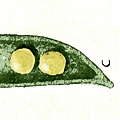It is often difficult to advocate for the importance of gene inheritance and transmission. After all, why should anyone care about Mendelian genetics? Mendel did excellent work, but his research was performed long ago. In recent years, has not molecular genetics replaced the need to learn about gene transmission? Questions such as these are often posed by students and scientists alike. Ironically, with the completion of the Human Genome Project, the need to merge the analytical power of gene inheritance with molecular approaches is more important than ever before.
These days, principles of gene inheritance and transmission are all too often presented as "fact." Thus, it is easy to forget that the simplest ideas of inheritance and transmission were elucidated by hard work and experimentation. Every student knows something about Mendel and his peas; however, the work of other early geneticists is virtually unknown. For example, in the first decade of the twentieth century, Bateson and Punnett looked at the phenotypes of hundreds of chickens in order to describe the first case of epistasis. Meanwhile, Harris realized that Pearson's goodness-of-fit test (now called the chi-square test) might be used to bring statistical rigor to Mendelian genetics. Around the same period, Morgan and his colleagues made significant advances using the fruit fly Drosophila melanogaster as a model system, and they studied the first-known heritable mutation using these flies. In still other laboratories, Sutton merged cell biology and genetics to propose the radical idea (for the time, at least) that genes might actually be on chromosomes, and Timofeeff-Ressovsky described the concepts of penetrance and expressivity through extensive experimental work.
The efforts of these researchers and many others are all described in the gene inheritance and transmission topic room. Indeed, this room relies upon such experimental evidence as the basis for its discussion of the current state of knowledge in the field of transmission genetics. Transmission genetics is more than an historical journey, however. Genetic analysis at this level involves observation and explanation of phenotypic patterns both among the offspring of specified hybrid crosses and among naturally occurring families. Here, the analytical power of planned crosses is particularly important. But what can researchers learn from a test cross? How can they use hybrid crosses to construct gene maps? What exactly is epistasis, and why is it important? How can genetic crosses be used to isolate new mutants in model systems such as nematodes, zebrafish, or Drosophila? And how can someone "construct" an organism of known genotype so that he or she can carry out investigations of gene action? The answers to these questions and many more can all be found here, thereby emphasizing the use of the transmission genetics as a valuable research tool.
Image: Sheila Terry/Science Source.
McGuire, T. (2008) Introduction to the gene inheritance and transmission topic room. Nature Education 1(1):189













